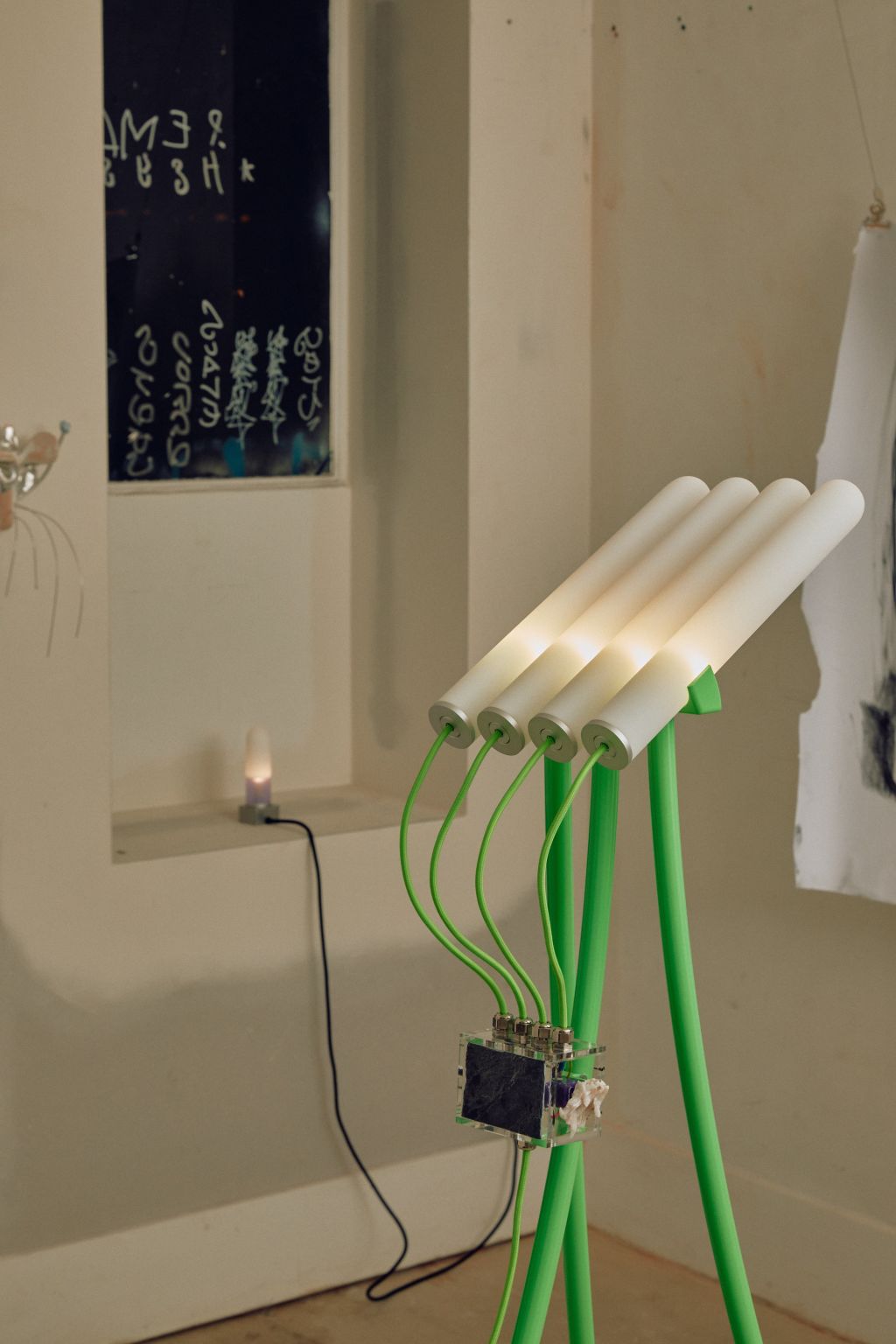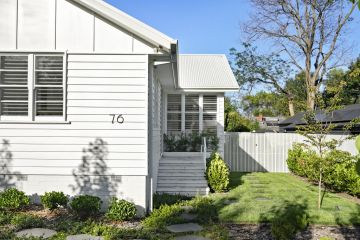'I'm seeing non-trends': Style is back down to earth

While post-pandemic design continues to riff on curves, punchy colour and playfulness, local designers are looking to nature and the beauty of textural materials to help shape less trend-driven pieces with a focus on tradition and personal experiences.
“There’s a new level of confidence in our designers and a fascinating narrative around materials,” says design expert Simone LeAmon. “Furniture, lighting and art are demonstrating confidence, independent thinking and ideas and expertise in production, both handmade and industrial – it’s a thrilling time.”
And LeAmon would know. As curator of contemporary design and architecture at the NGV, she is co-curating over 150 designers and makers for the upcoming Melbourne Design Fair.
“I’m not seeing trends; I’m seeing non-trends,” she laughs. “It’s about collectable design, authentic materials, free-thinking and letting the materials impact their design and tell stories.”
Here are LeAmon’s tips for furnishing, lighting and decorating design-forward, comfortable spaces in any home environment.
UNIQUE MATERIALS
From ceramic and mirror to basalt and aluminium, LeAmon says the spotlight is now firmly on materials. “Once, materials were made fit for purpose, now we see them as the focal point for designers’ work,” she says. “They are either showcased in their uncomplicated natural state or pushed in ways we haven’t seen before.” Melbourne creative Nicole Lawrence, a trained industrial designer and jeweller, and former alumnus of influential lighting designer Christopher Boots, pays homage to the timeless art of weaving using anodised metals. Artist and designer Dalton Stewart uses locally reclaimed bluestone (or olivine basalt) and machine-made sheet metal to craft stunning, statuesque one-of-a-kind shelves that are the perfect fit for a contemporary interior space.

TEXTILES
Rugs are no longer just art for the floor but can be hung on walls too. Designer Emma Jackson, an architect with a deep interest in earth sciences and a passion for textiles, designs vividly coloured, large-scale hand-knotted silk and cotton rugs that show how the landscape results from billions of years of movement and migration. “She collaborates with a workshop in Nepal, and one of her largest pieces, Tiger Fish, depicts four billion years of history,” LeAmon says. “It’s the ultimate accolade for unique rug design crafted using incredible techniques, and looks stunning on a large wall as a room’s focal point.”

THE ART OF CRAFT
LeAmon is seeing a growing emphasis on craft values and high-quality artisanship. “Designers are listening to their materials and engaging honestly and directly with them using honed techniques for astonishing results,” she says. Brisbane ceramicist Nicolette Johnson uses coiling, wheel-throwing and sculpting techniques to shape vessels featuring esoteric and surrealist motifs, and designer Simone Tops from Studio Tops stretches kangaroo leather into vellum for her table and lighting creations. Furniture maker James Howe draws on natural and urban landscapes, expertly meshing materials like wood and twine. His seamlessly crafted credenzas, tables, chairs and kitchen objects are minimal and streamlined and suit any style of interior.

LIGHTING
Experimental lighting is no longer purely decorative or functional – now, it ticks both boxes. Electrician, industrial designer and techno musician Jay Jermyn explores the relationship between digital, natural and human phenomena by creating graphic lighting designs that express his skills and expertise. The father-and-daughter team at Snelling Studio designs and crafts elegant lighting that meshes contemporary technology with a pared-back aesthetic. “In the past, we have seen extraordinary lighting design where the function is not the highest priority because it’s all about the design,” LeAmon says. “Now we see the two combine for extraordinary effect that not only is an art piece but also provides functional light required in a home office or kitchen.”

STORYTELLING
Without the time and quantity restraints that mass manufacturers carry, smaller brands and designers make limited-edition pieces that place themselves in their work for entirely personal art. Melbourne experimental designer Julian Leigh May embeds hand-polished mirrors with ideas and emotions, combining aluminium, sand-cast thorns and hand-polished reflective mirrors for the ultimate self-portrait. Tasmanian visual artist Samantha Denis uses goldsmithing and ceramics to explore her relationship with nature, while Matthew Prince creates conventional furniture that tells a story about where its timber has come from and why it has been chosen. “It’s a level of storytelling from form to material,” LeAmon says. “When work is beautifully resolved and emblematic of the storied history of maker, material and their skills, it is to be celebrated.”
The Melbourne Design Fair is on from May 18-21 at the Melbourne Convention and Exhibition Centre.
We recommend
We thought you might like
States
Capital Cities
Capital Cities - Rentals
Popular Areas
Allhomes
More
- © 2025, CoStar Group Inc.










